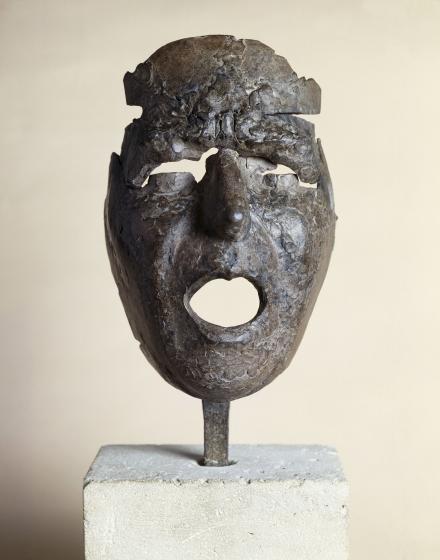
Together with Constantin Brancusi and Pablo Picasso, the Spanish artist Julio González (1876 – 1942) is considered one of the most important sculptors of the 20th century. This retrospective of over 100 works, most of which are being exhibited in the Netherlands for the first time, sheds light on his personal development: from his days as a metal worker in his father’s workshop in Barcelona to his time as an avant-garde sculptor in Paris. It also addresses the unique collaboration and friendship between González and Picasso (1929 – 1932). This collaboration played a decisive role in the development of González’ unique and innovative style, and it also gave rise to new forms of expression in Picasso’s work.
They worked together on a number of sculptures over a four-year period. For both artists, the collaboration provided a major push to further development. Thanks to González, Picasso discovered new modes of expression in sculpture and for González the collaboration was the final leg of his journey towards a distinctive artistic style. This exhibition at the Gemeentemuseum Den Haag focuses principally on González’s development from craftsman to avant-garde artist. With no fewer than 20 works by Picasso, it is also a celebration of the friendship between the two men.
The exhibition also examines the highly personal friendships that Julio González maintained with other artists. He worked for some years as an assistant to Constantin Brancusi (1876 – 1957). Pablo Gargallo (1881 – 1934), who drew on González’s technical expertise as early as 1923, recognized his artistic talent and encouraged him to devote himself entirely to sculpture. And it was in González’s workshop that Gargallo’s son-in-law, Hans Hartung (1904 – 1989), created his first and only sculpture in 1938. (Gemeentemuseum press-release)
Haags Gemeentemuseum. Stadhouderslaan 41, 2517 HV Den Haag
https://www.gemeentemuseum.nl/en
Image: Julio González (1876-1942), Monsieur Cactus (L’Homme Cactus I), Collectie Gemeentemuseum Den Haag
